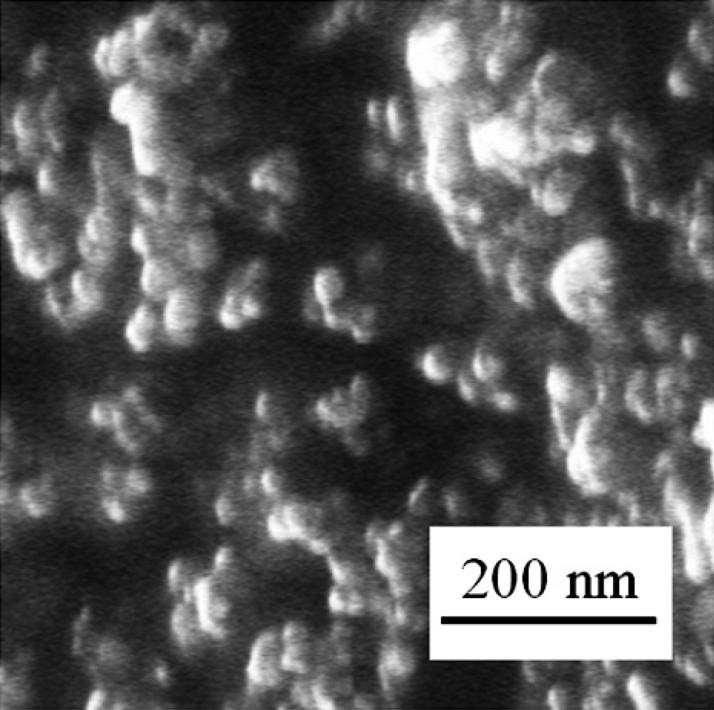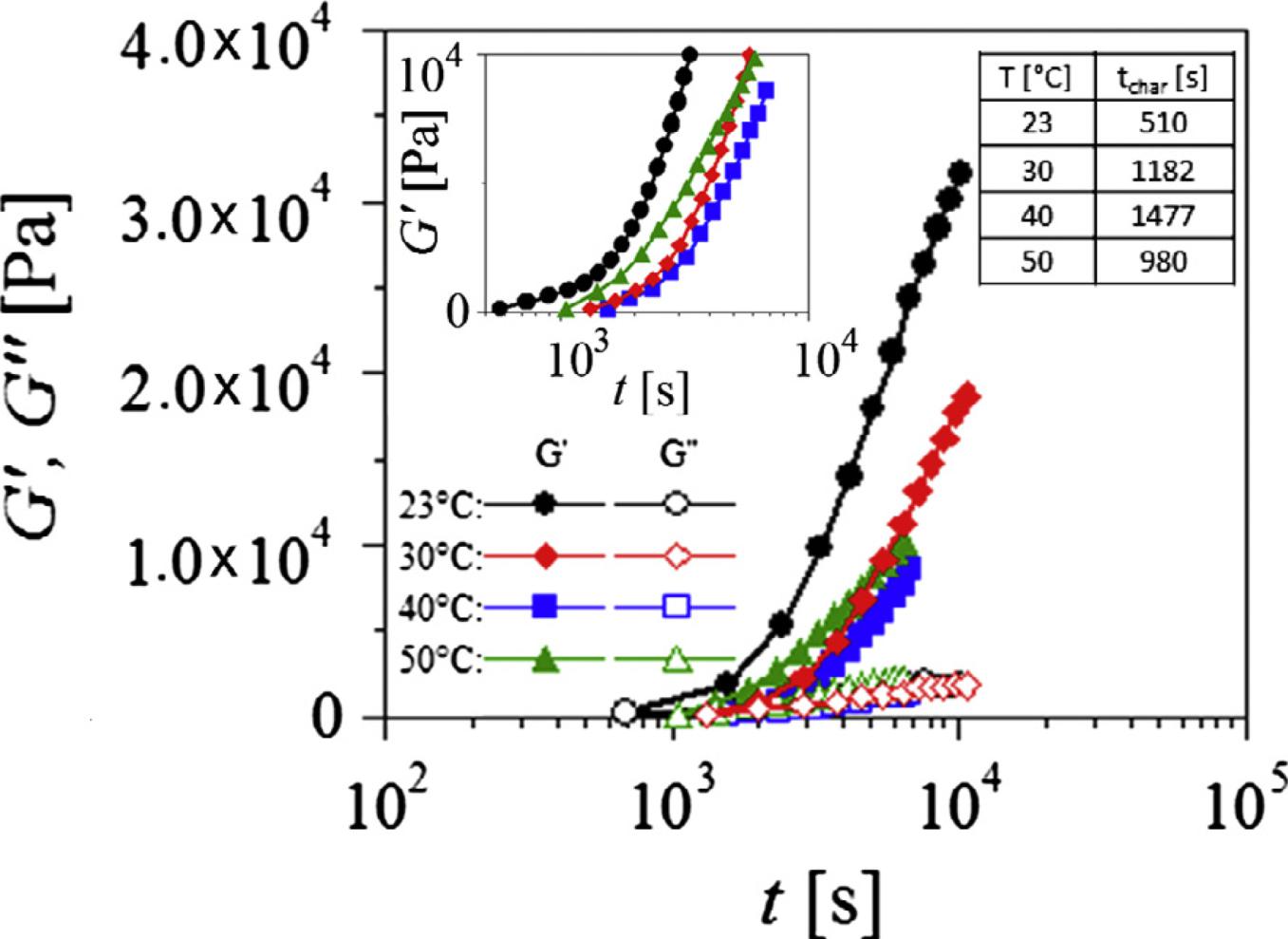Research - Colloids
Reactive silica gels
A system spanning gel network may be grown or aggregated from nano-sized silica particles in a solution of sodium silicate and low concentrated sufuric acid. To study the impact of the finite solubility of silica at high pH (~10) we used both classical and piezo-rheometers. Any pre-shear was avoided by direct preparation of the gel in the rheometer cell. |

|
We found a logarithmic growth of the gel's storage modulus. After passing the gel point, the system still shows relaxation at low frequency (below 6 rad/s), caused by structural rearrangements. The reaction equilibrium goes along with a relatively high bond dissolution rate. This leads to a finite life time of bonds and a behaviour similar to physical gels. The logarithmic time dependance of the storage modulus matches this interpretation. Lower water concentrations, higher temperatures and shorter reaction times reveal a more pronounced frequency dependance. With the modified Cole-Cole and the Baumgaertel-Schausberger-Winter models, we deduced similar charatieristic times from experimental data.

The time dependence of moduli at different temperatures. Inset: The data at low storage modulus range (G0 < 104 Pa).
- Wang, M., H. H. Winter and G. K. Auernhammer;
Time and frequency dependent rheology of reactive silica gels;
J. Coll. Int. Sci. 413: 159 - 166. (2014).

